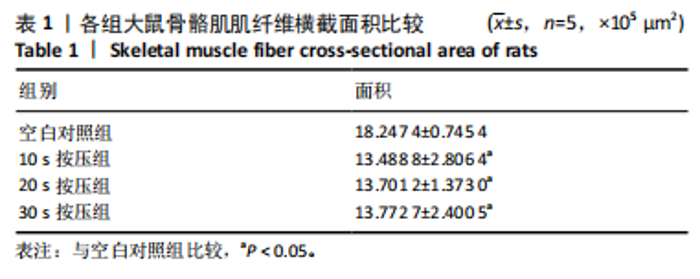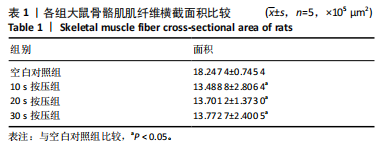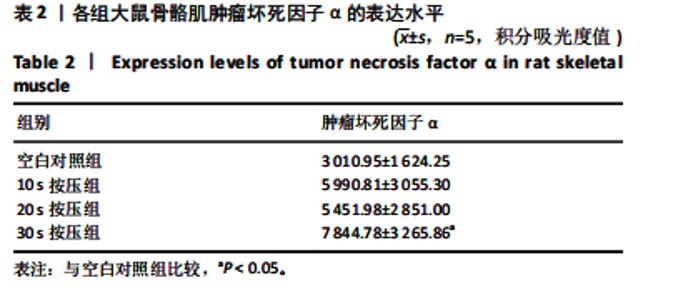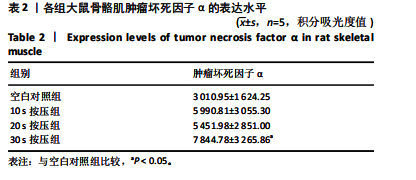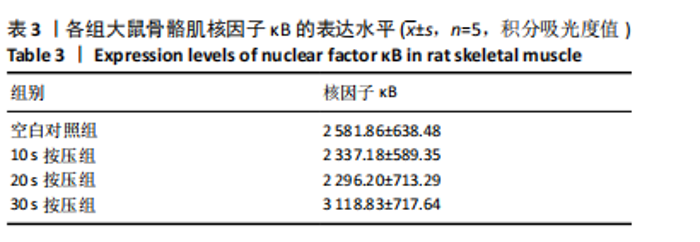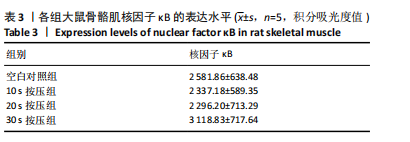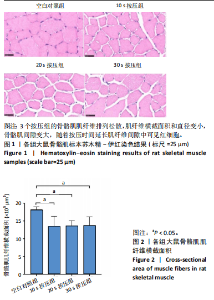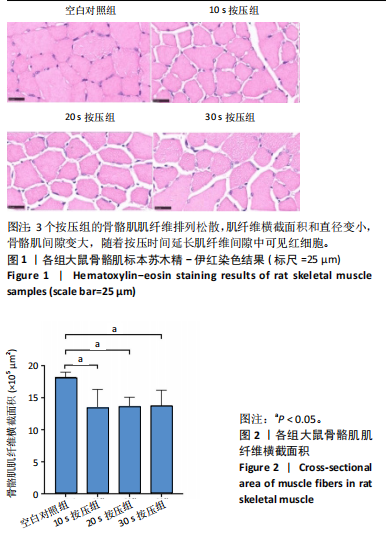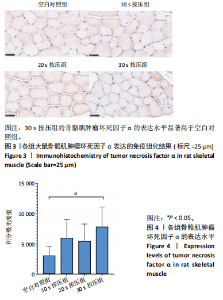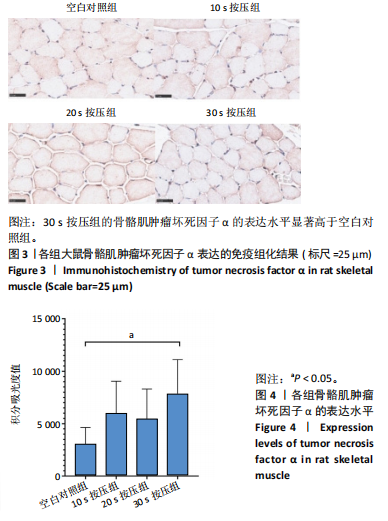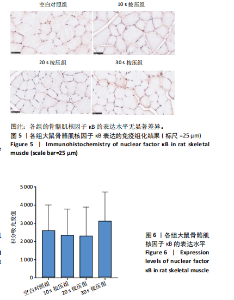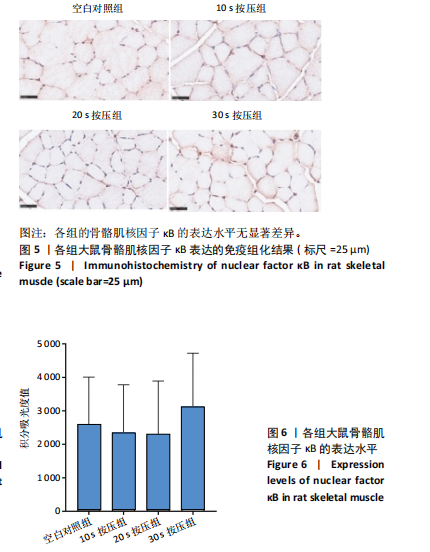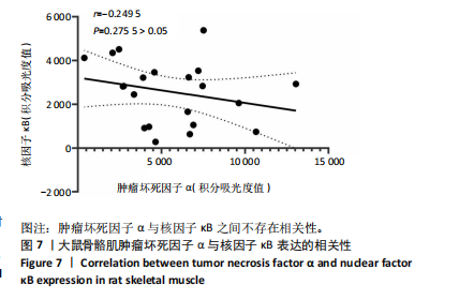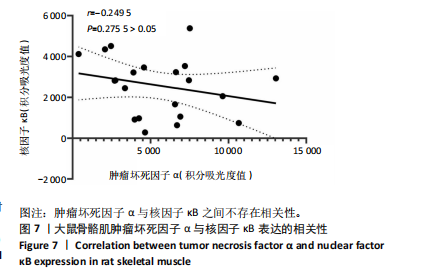[1] 陈波,罗永芬,崔瑾,等.静态压力刺激对大鼠“足三里”穴区及穴旁区域成纤维细胞PGE_2和IL-6释放影响的比较研究[J].中国针灸,2007,27(2):135-140.
[2] 张莹莹, 邢阳辉, 宫赫, 等. 按摩治疗的细胞力学效应及机制[J]. 中国康复医学杂志,2021,36(9):1169-1174.
[3] FRONTERA WR, OCHALA J. Skeletal muscle: A brief review of structure and function. Calcif Tissue Int. 2015;96(3):183-195.
[4] 黄博, 阮磊, 王兰兰, 等. 推拿治疗骨骼肌损伤的分子生物学机制研究进展[J]. 湖南中医药大学学报,2023,43(4):753-758.
[5] LIAO J, Zhang L, ZHENG J, et al. Electroacupuncture inhibits annulus fibrosis cell apoptosis in vivo via TNF-α-TNFR1-caspase-8 and integrin β1/Akt signaling pathways. J Tradit Chin Med. 2014;34(6): 684-690.
[6] ZHANG M, LIU Q, MENG H, et al. Ischemia-reperfusion injury: molecular mechanisms and therapeutic targets. Signal Transduct Target Ther. 2024;9(1):12.
[7] GONZALEZ CALDITO N. Role of tumor necrosis factor-alpha in the central nervous system: a focus on autoimmune disorders. Front Immunol. 2023;14:1213448.
[8] 陈自力, 曹宁, 徐萌, 等. 肿瘤坏死因子α预处理人脐带间充质干细胞的生物学特征分析[J]. 中国组织工程研究,2023,27(24):3780-3787.
[9] MUSSBACHER M, DERLER M, BASIILIO J, et al.NF-κB in monocytes and macrophages-an inflammatory master regulator in multitalented immune cells. Front Immunol. 2023;14:1134661.
[10] DEVANABOYINA M, KAUR J, WHITELEY E, et al.NF-κB Signaling in Tumor Pathways Focusing on Breast and Ovarian Cancer. Oncol Rev. 2022;16:10568.
[11] 杨晓林,魏文,李志欣,等.浮针配合再灌注活动治疗压力性尿失禁的临床效果[J].中国医学创新,2023,20(32):66-70.
[12] 卢悦. 推拿按压致大鼠骨骼肌损伤的时间-压强曲线研究[D]. 武汉:武汉体育学院,2022.
[13] 王艳艳, 孙海琴, 张纯瑜, 等. 压疮早期动物模型的制备及评价[J].护理学杂志,2010,25(14):1-5.
[14] 郭悦,刘纯兴.醛固酮受体拮抗剂螺内酯减轻肢体缺血再灌注致心肌损伤的信号传导机制[J].中西医结合心脑血管病杂志,2023, 21(8):1423-1426.
[15] 袁元, 张宏, 张国辉, 等. 运动性骨骼肌损伤微结构改变与康复治疗研究进展[J]. 按摩与康复医学,2023,14(6):29-33.
[16] TU H, LI YL. Inflammation balance in skeletal muscle damage and repair. Front Immunol. 2023;14:1133355.
[17] WATERS-BANKER C, BUTTERFIELD T, DUPONT-VERSTEEGDEN E. Immunomodulatory effects of massage on nonperturbed skeletal muscle in rats. J Appl Physiol(1985). 2014;116(2):164-175.
[18] VILLOTA-NARVAEZ Y, GARZON-AIVARADO DA, RÖHRLE O, et al. Multi-scale mechanobiological model for skeletal muscle hypertrophy. Front Physiol. 2022;13:899784.
[19] SEO BR, PAYNE CJ, MCNAMARA SL, et al. Skeletal muscle regeneration with robotic actuation-mediated clearance of neutrophils. Sci Transl Med. 2021;13(614):eabe8868.
[20] TIEGS G, HORST AK. TNF in the liver: targeting a central player in inflammation. Semin Immunopathol. 2022;44(4):445-459.
[21] BHATNAGAR S, PANGULURI SK, GUPTA SK,et al.Tumor necrosis factor-α regulates distinct molecular pathways and gene networks in cultured skeletal muscle cells. PLoS One. 2010;5(10):e13262.
[22] SPIELMANN S, KERNER T, AHLERS O, et al. Early detection of increased tumour necrosis factor alpha (TNFalpha) and soluble TNF receptor protein plasma levels after trauma reveals associations with the clinical course. Acta Anaesthesiol Scand. 2001;45(3):364-370.
[23] LI R, YE JJ, GAN L, et al. Traumatic inflammatory response: pathophysiological role and clinical value of cytokines. Eur J Trauma Emerg Surg. 2023 Dec 27. doi: 10.1007/s00068-023-02388-5.
[24] CRANE JD, OGBORN DI, CUPIDO C, et al.Tarnopolsky MA. Massage therapy attenuates inflammatory signaling after exercise-induced muscle damage. Sci Transl Med. 2012;4(119):119ra13.
[25] 左群, 于新凯, 李男. 骨骼肌损伤和修复中炎症细胞因子作用的研究进展[J].中国康复医学杂志,2012,27(9):878-881.
[26] KLEINBONGARD P, HEUSCH G, SCHULZ R. TNFα in atherosclerosis, myocardial ischemia/reperfusion and heart failure. Pharmacol Ther. 2010;127(3):295-314.
[27] SCHULZ R, HEUSCH G. Tumor Necrosis Factor-α and Its Receptors 1 and 2. Circulation. 2009;119(10):1355-1357.
[28] SON M, WANG AG, KEISHAM B, et al. Processing stimulus dynamics by the NF-κB network in single cells. Exp Mol Med. 2023;55(12):2531-2540.
[29] ANIIKUMAR S, WtRIGHT-JIN E. NF-κB as an Inducible Regulator of Inflammation in the Central Nervous System. Cells. 2024;13(6):485.
[30] 潘莹莹,高歌心,谢浩煌,等.TNF-α、NF-κB在大鼠压疮深部组织损伤中的表达及其对细胞凋亡作用[J].中国应用生理学杂志, 2013,29(5):441-445.
[31] BARNABEI L, LAPLANTINE E, MBONGO W, et al. NF-kappaB: At the Borders of Autoimmunity and Inflammation. Front Immunol. 2021;12: 716469.
[32] WEBSTER JD, VUCIC D. The Balance of TNF Mediated Pathways Regulates Inflammatory Cell Death Signaling in Healthy and Diseased Tissues. Front Cell Dev Biol. 2020;8:365.
[33] LI YP, REID MB. NF-kappaB mediates the protein loss induced by TNF-alpha in differentiated skeletal muscle myotubes. Am J Physiol Regul Integr Comp Physiol. 2000;279(4):R1165-R1170.
|
